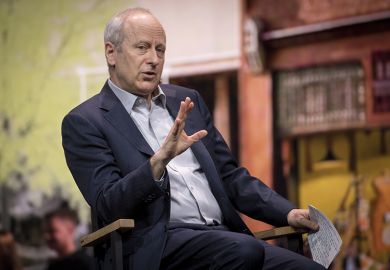This book by Britain's most widely read philosopher of religion ought to send shock waves through the religious establishment. The fact that it will not is a tribute first to John Hick's success in making his "big picture" of the universe seem like the only show in town for mainstream Christians today, and second to the churches' capacity for self-deception.
In The Fifth Dimension , Hick distils for the general reader a lifetime's work on comparative religion. It is a model of clarity, with apt quotations from traditions east and west, presenting the world's faiths through both the writings and the lives of their adherents. The author's skills as a teacher cannot, however, disguise his role as an advocate. Everything in the book serves to promote his view that neither scientific naturalism nor traditional religious beliefs are sufficient for a complete appreciation of the universe. According to Hick, the big picture must accept modern science in its entirety, to explain the four dimensions of space-time, and must also accept the limitations of the scientific method when it comes to the transcendent fifth dimension witnessed by religion.
Hick's multicultural view of the world from Birmingham contrasts strongly with two other British philosophers of religion: Oxford's conservative Richard Swinburne and Cambridge's radical Don Cupitt. Swinburne is a realist in philosophy, insisting that there really is a God as described by Christian doctrine: a single yet triune personal spirit, eternal, free, almighty, the creator and sustainer of the universe, worthy of human obedience and worship. Cupitt is a non-realist who defines God only in relation to humanity: the sum of our values, representing to us their ideal unity, their claims upon us and their creative power. Between them stands Hick, describing himself as a critical realist. Against Swinburne he says that all our words and ideas about God are culturally conditioned products, not descriptions of objective reality; that is his "critical" side. Against Cupitt, he claims that the spiritual dimension is nonetheless objectively there, quite independent of human perceptions; that is his "realist" side.
Hick is popular with the churches for two reasons. First, his stout defence of the objectivity of the Ultimate (his preferred term) is assumed to provide academic respectability for Christian belief in God. Second, his use of Kant's distinction between "things in themselves" and "things as they appear to us" seems to permit a positive attitude to other traditions without denying one's own distinctive faith. Neither of these assumptions bears scrutiny. If Hick is right, then - as he himself concludes - dogmatic religion can be no more than speculation and no religious pronouncement should claim to be infallible. That is hardly good news for mainstream Christianity.
Hick's critical realism not only fails to provide the support for traditional dogma that the churches want, it also lets him down where he tries to make his own more modest statements about the Ultimate. For example, in order to show there is no contradiction between one religion believing in a personal God and another in a non-personal Absolute, he claims that transcendent reality is "trans-categorical", beyond the categories of personal and impersonal. But this will not do. If the Ultimate is objectively beyond the personal/non-personal distinction, then it cannot be true to claim that it is either a personal God or a non-personal Absolute. That kind of pluralism is only open to the non-realists, for whom no human distinctions are "objectively true". Realism in religion, even critical realism, is a cosmic lottery where the single chance of being right is bought at the price of countless ways to be wrong.
The failure of Hick's attempted pluralism is clearly shown when he states that "a series of further finite lives awaits us". This flatly contradicts the central Christian belief that "it is appointed unto men once to die, but after this the judgment" (Hebrews ix, ). Hick is not here transcending Christian and Hindu/Buddhist categories, he is abandoning the former in favour of the latter.
If Christians want realism, they must forfeit pluralism and side with Swinburne and exclusiveness. If they want pluralism, they must forfeit realism and side with Cupitt. Hick's "big picture", appearing to combine the two, is an illusion: superficially attractive, it lacks the depth to sustain what it seems to offer.
Revd Anthony Freeman is managing editor, Journal of Consciousness Studies .
The Fifth Dimension: An Exploration of the Spiritual Realm
Author - John Hick
ISBN - 1 85168 190 6 and 191 4
Publisher - Oneworld
Price - £14.99 and £10.99
Pages - 288


